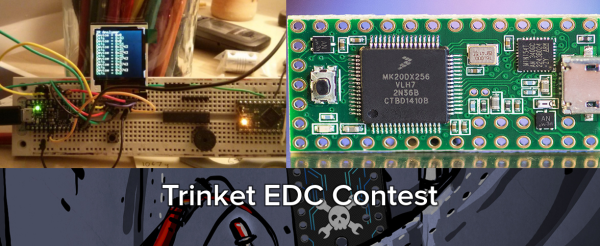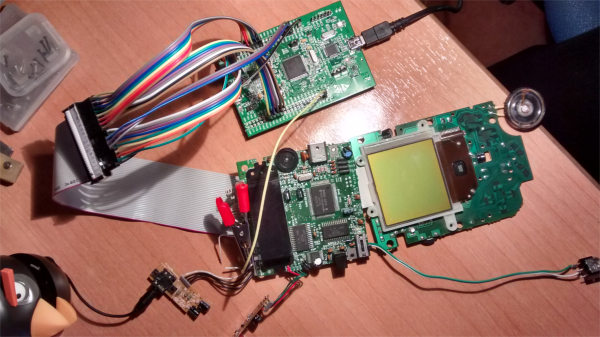The final random drawing for Hackaday’s Trinket Everyday Carry Contest was held tonight, and the winner is [flaming_goat] with Trinket Pocket IR Analyser/Transmitter!
 In addition to having an awesome username, [flaming_goat] loves IR protocols. Trinket Pocket IR Analyser/Transmitter is a standalone device to read, analyze and transmit Infrared (IR) signals. The IR portion of the project is handled by a Vishay TSOP38238 (PDF link) The 382 series is a 3 pin module. It comes in several variants, each tuned to a specific carrier frequency. The 38238 will decode IR signals at 38 kHz.
In addition to having an awesome username, [flaming_goat] loves IR protocols. Trinket Pocket IR Analyser/Transmitter is a standalone device to read, analyze and transmit Infrared (IR) signals. The IR portion of the project is handled by a Vishay TSOP38238 (PDF link) The 382 series is a 3 pin module. It comes in several variants, each tuned to a specific carrier frequency. The 38238 will decode IR signals at 38 kHz.
The demodulated IR signals are fed into the Pro Trinket, where they can be analyzed. Data is either sent through the serial terminal or displayed on the on-board 1.44″ TFT LCD. Source code for the whole project is up on [flaming_goat’s] GitHub repo.
[flaming_goat] will be receiving a Teensy 3.1 and an Audio+SD adapter from The Hackaday Store. If the Pro Trinket is a gateway drug, then Teensy 3.1 is the hardcore stuff. Powered by a Freescale Kinetis ARM Cortex M4 processor in a tiny package, the Teensy 3.1 packs quite a punch. You might think all that power would mean complex tools, but Teensy 3.1 is still easy to program using the Arduino IDE. The Audio+SD adapter board gives Teensy 3.1 the ability to create some pretty decent audio, thanks to the Teensy Audio Library.
This was the last weekly drawing for the Trinket Everyday Carry Contest, but there is still time to enter and win the big prizes! The deadline is January 3 at 12am PDT. That’s just about 3 days to enter – so procrastinators, get in the game!


















